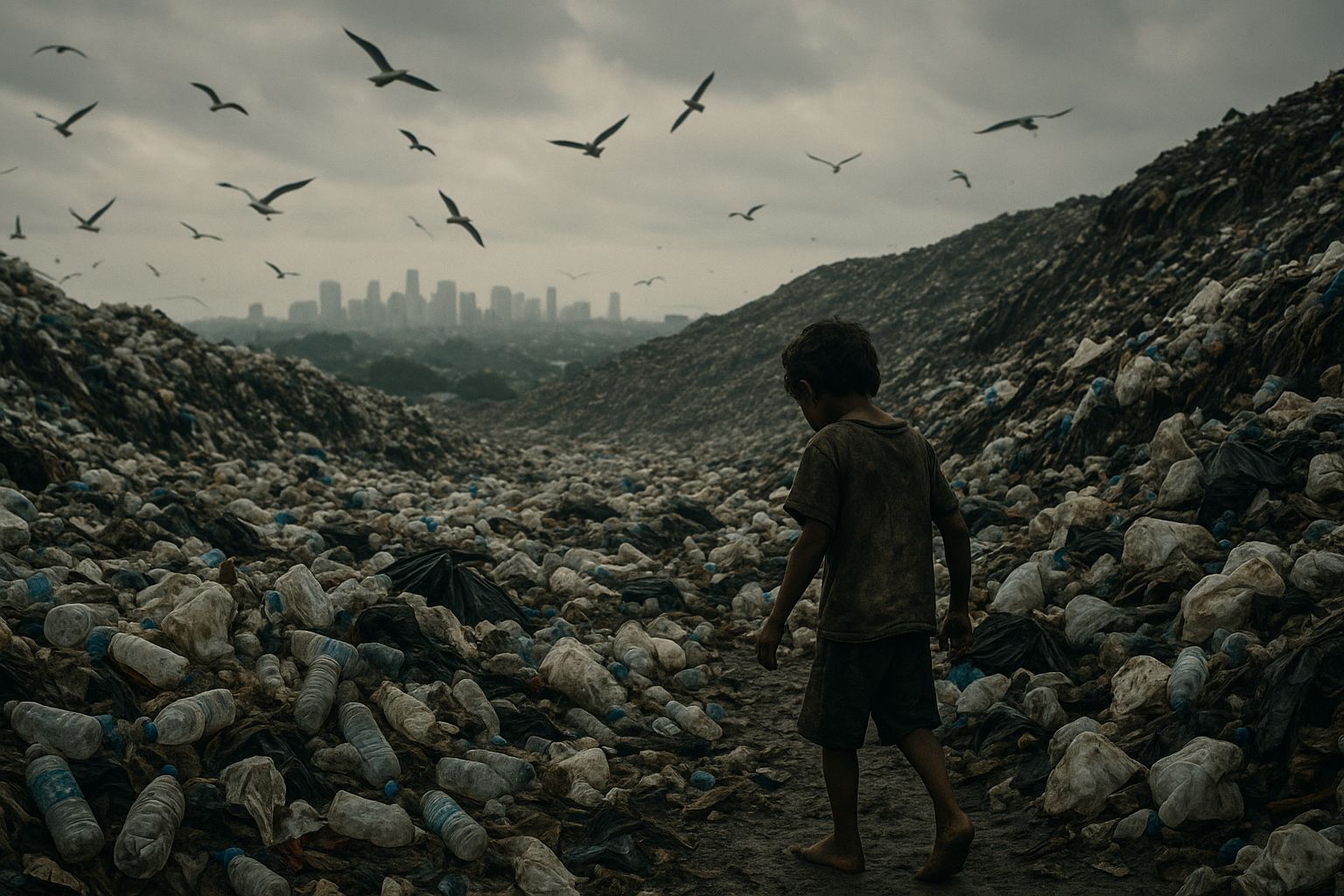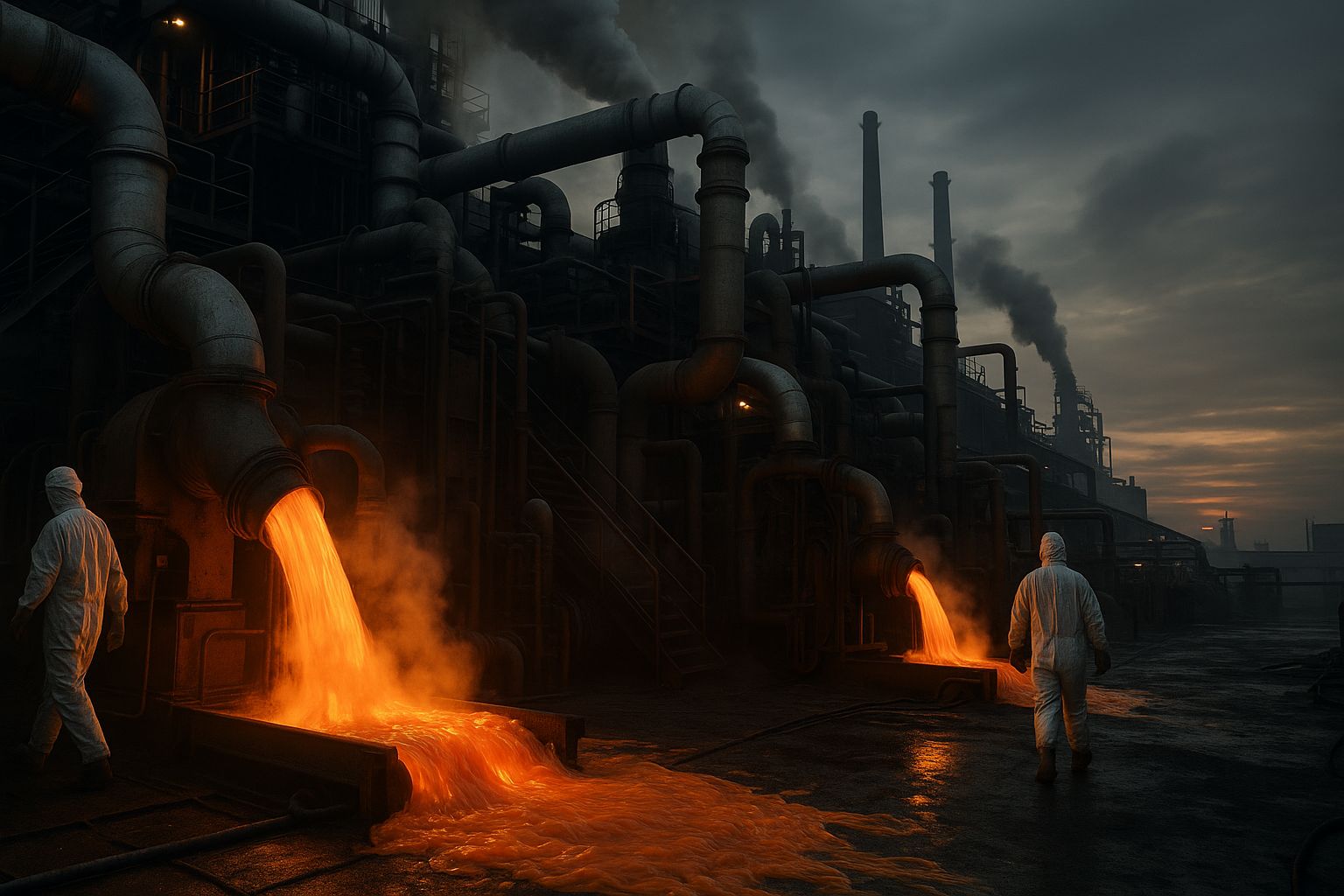- Green Glow
- Posts
- 🌱 Why Cutting Plastic Production Is More Important Than Recycling ♻️🚫
🌱 Why Cutting Plastic Production Is More Important Than Recycling ♻️🚫
Plastic recycling alone cannot stop the global pollution crisis. This article explains why cutting plastic production is the most effective solution to protect ecosystems, human health and the climate, and why reduction must take priority over recycling.
Plastic pollution has become one of the most urgent environmental threats of our time. Governments and corporations often highlight recycling as the primary solution. However, recycling alone is not enough to address the crisis. The world is producing more plastic each year than recycling systems can ever manage. The result is an escalating burden on ecosystems, public health and climate stability. In reality, the only way to solve the plastic problem is to significantly reduce how much plastic is manufactured in the first place.
Table of Contents

The Growth of Plastic Production
Plastic production has increased at an astonishing pace. In 1950 the world produced around 2 million metric tons of plastic. Today that number exceeds 470 million metric tons per year. Much of this expansion comes from fossil fuel companies that are investing heavily in petrochemical plants in order to convert crude oil into plastics. As the demand for gasoline and diesel slowly declines due to renewable energy and electric vehicles, oil and gas companies are turning plastics into a new core business strategy.
Why Recycling Is Not Enough
Recycling is often marketed as a guilt free way to continue using plastic. The reality is very different. Only about 5 or 6 percent of plastic in the United States is successfully recycled. Many plastics cannot be recycled at all because their chemical compositions, dyes and additives make them unsuitable for reuse. Even the material that is recycled loses quality after each cycle and eventually becomes waste. Most plastic either goes to landfills, is burned or leaks into rivers, oceans and soil.
When recycling is promoted as the primary solution, it creates a false sense of security. People continue consuming plastic under the assumption that recycling will take care of it. Meanwhile tons of waste accumulate across the planet.
The Impact on Human Health and Communities
Plastic pollution does not only affect marine life and landscapes. It harms human health as well. Microplastics and nanoplastics are now found in drinking water, seafood, human blood, lung tissue and even the placenta. These particles contain toxic chemical additives that can disrupt hormones, weaken immunity and increase the risk of disease.
Communities near petrochemical plants suffer the most. Many such industrial zones are located in low income regions that already face disproportionate health burdens. The expansion of plastic production brings additional air pollution and toxic exposure that can increase cancer rates and respiratory illnesses.

How Plastic Fuels Climate Change
Plastic is a climate problem as well as a pollution problem. Every stage of the plastic life cycle releases greenhouse gases. From extracting fossil fuels to manufacturing the polymer to transporting raw materials and finished products, emissions accumulate rapidly. The disposal stage adds even more. Incinerating plastic releases carbon dioxide and other harmful gases. Landfilled plastic generates methane as it breaks down, and methane traps far more heat than carbon dioxide.
Plastic is not separate from the climate crisis. It is a growing contributor to it.
Why Reduction Is the Only Real Solution
Recycling cannot keep up with the accelerating rate of plastic production. Successful solutions focus on reducing how much plastic is created in the first place. This approach addresses the problem at the source rather than after the damage is done.
Key strategies include:
Banning unnecessary single use plastics such as disposable bags and cutlery
Encouraging reusable alternatives in packaging and food service
Supporting refill systems and container return programs
Setting legal caps on plastic production at national and global levels
Holding manufacturers responsible for the full life cycle of their products
These measures reduce pollution, protect public health and lower emissions. They also support innovation in sustainable materials and business models that do not rely on endless waste.
The Role of Consumers and Policymakers
Consumers play an important part by choosing reusable products whenever possible and reducing reliance on disposable plastic. However, individuals cannot solve a global industrial problem alone. Policies must prevent corporations from shifting responsibility to the public.
Governments need to:
Enforce limits on plastic production
Strengthen environmental regulations around petrochemical facilities
Invest in research and infrastructure for safer alternatives
Support international agreements aimed at cutting plastic creation
Meaningful change requires combined pressure from citizens, policymakers and businesses that are committed to sustainable development.

Conclusion
Recycling has value but it is not enough to stop the runaway growth of plastic pollution. The world cannot recycle its way out of the crisis. As long as plastic production continues to rise, waste, health risks and climate damage will rise with it. The true solution is not simply managing plastic at the end of its life but preventing excess plastic from being produced at all. Cutting plastic production protects the environment, human health and the climate in a way that recycling alone cannot achieve.
FAQs
Why is cutting plastic production more important than recycling?
Because the world produces far more plastic than recycling systems can handle. Most plastic is never recycled and ends up in landfills, oceans or incinerators. Reducing production addresses the problem at its source rather than after the waste exists.
What percentage of plastic is actually recycled?
Globally the rate varies, but in the United States only around 5 to 6 percent of plastic is successfully recycled. Most plastics are not designed to be recycled in the first place.
Does recycling help at all?
Recycling helps in certain cases, especially when high-quality materials like aluminum and glass are collected properly. For plastics, it has limited impact due to material limitations and contamination.
Why can’t plastic be recycled repeatedly like metal or glass?
Plastic loses quality every time it is reprocessed. After one or two cycles it becomes unusable and eventually becomes waste. Some plastic types cannot be recycled at all.
Are bioplastics a complete solution?
Bioplastics can reduce fossil fuel dependency but they are not a universal solution. Many require industrial composting facilities, and some break down slowly or not at all in natural environments.
You May Also Like
🌱 16 Game-Changing Actions Cities Can Take to Combat Climate Change 🌆♻️
🌱 Trump Pressures Senate to Slash Wind and Solar Tax Credits ⚖️☀️
🌱 Pollution vs. Education: The Silent Crisis in America’s Gas-Producing Regions ⚠️📚
🌱 Solar Tsunami: China Installs 100 Panels Every Second in May 2025 ⚡🌞
🌱 How China Became the Undisputed Leader in Green Energy Investment 🔋🌿
External Links
Follow Us:
X: https://www.x.com/greenglownews
Youtube: https://www.youtube.com/@greenglownews
Instagram: https://www.instagram.com/greenglownews
Sponsored Links